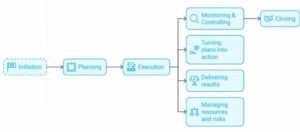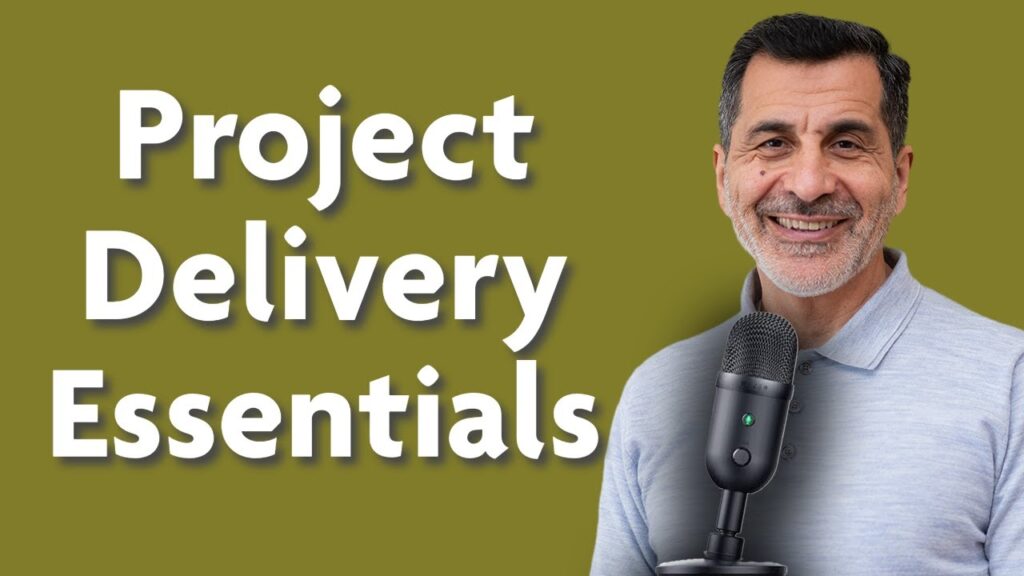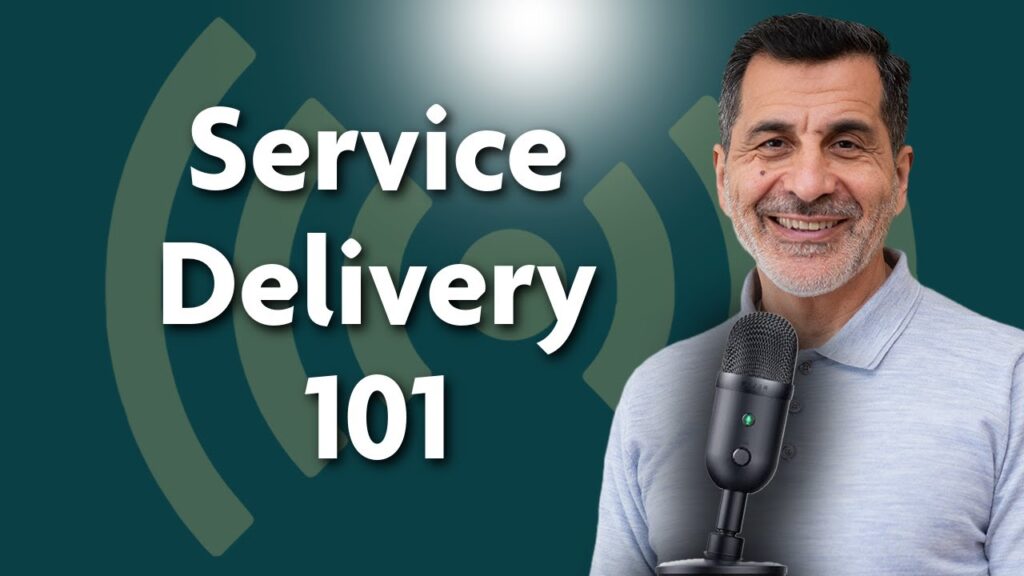Project Execution and Planning Secrets and Tools for Consultants

You landed that dream client and kicked off the project with a bang. But then… uh-oh! Unexpected issues, missed deadlines, and miscommunication turned your dream project into a nightmare. Sound familiar? It’s a common scenario for consultants, but that’s where a solid project execution plan comes in.
As the old saying goes, “A goal without a plan is just a wish.” And in project management, this couldn’t be truer.
In fact, according to a study by the Project Management Institute, organizations with a high level of project management maturity waste 28 times less money than those with a low level of maturity. This means one thing: a solid project execution plan is the magic formula for any successful project management.
Watch the live stream where I cover this topic in depth:
Understanding Project Execution
What is Project Execution?
Project execution is arguably the most critical phase of the project lifecycle. It’s where the value is created, plans are put into action, tasks are completed, deliverables are produced, and the client’s expectations are unmet, met (or exceeded).
An effective project execution strategy ensures that:
- Project goals are achieved
- Client satisfaction is high
- Risks are mitigated
- Team morale is boosted (if you have a team)
- Profitability is maximized
Project Execution in the Project Lifecycle
This typically follows the planning phase and precedes the monitoring and controlling, and closing phases.
Here’s a quick overview of how it fits into the overall project life cycle.

A Step-by-Step Flow from Initiation to Closing, with Core Phases Including Planning, Execution, and Monitoring
Key Components of a Project Execution Plan
Let’s explore the key components of a robust project execution plan.
Objectives
This often revolves around solving a client’s specific problem or helping them seize an opportunity. Ensuring clarity and alignment on objectives from the outset is crucial for project success.
It answers the fundamental question, “What are we trying to accomplish?” Objectives should be SMART:
- Specific: Clearly defined and unambiguous.
- Measurable: Quantifiable and trackable.
- Achievable: Realistic and attainable within the given constraints.
- Relevant: Aligned with the client’s overall business goals.
- Time-bound: Associated with a specific deadline.
Objectives often revolve around solving a client’s specific problem or helping them seize an opportunity.
Scope
The scope defines the boundaries of the project. It outlines what is included in the different project stages and, equally important, what is excluded.
Clearly defining the project scope helps prevent scope creep, which can lead to delays, budget overruns, and client dissatisfaction.
The project scope should include:
- Key tasks and activities: The work that needs to be done to produce the deliverables.
- Assumptions and constraints: Any factors that could impact the project’s execution.
Wondering the best strategies involved in avoiding scope creep?
Deliverables
The deliverables section details the tangible outcomes of the project. These are the specific products or services that will be delivered to the client, ensuring they are clearly defined, measurable, and directly aligned with the project objectives outlined earlier.
Examples of deliverables in consulting projects might include:
- Reports and presentations: Analyzing data, providing insights, and making recommendations.
Example: A retail client struggles with declining sales. You conduct a thorough market analysis, identifying key trends and customer preferences. Your deliverable? A visually engaging presentation that not only highlights the challenges but also presents actionable recommendations for revitalizing their marketing strategy and boosting sales.
- Strategic plans: Outlining a course of action to achieve specific business goals.
Example: A tech startup dreams of disrupting their industry, but they lack a clear roadmap. You step in, conducting in-depth research and collaborating with their team. Your deliverable? A comprehensive 3-year strategic plan, complete with milestones, KPIs, and actionable steps to guide their growth and innovation journey.
- Process improvements: Streamlining operations and enhancing efficiency.
Example: A manufacturing company struggles with bottlenecks and inefficiencies in their production line. You analyze their workflows, identify pain points, and propose streamlined solutions. Your deliverable? A detailed process improvement plan that reduces waste, optimizes resource utilization, and boosts overall productivity.
- Training programs: Equipping client teams with new skills and knowledge.
Example: A financial institution seeks to upskill its employees in data analytics. You design and deliver a tailored training program, equipping their staff with the knowledge and tools to leverage data for informed decision-making. Your deliverable? A series of engaging workshops and hands-on exercises that empower the team to harness the power of data and drive business growth.
Timeline
The timeline in your project plan is like a calendar for your project, showing when things will start and finish. It helps everyone know what to do and when to do it.
It should include the start and finish dates for the whole project, so everyone knows when the project begins and ends. It’s also important to include milestones, which are big moments that show you’re making progress. Finally, remember to show the task order, as some things need to be done before others.
Example Milestones for a Consulting Project:
- Kick-off Meeting: 1 week after signing the contract
- Learn about the client’s needs: 1 week after the kick-off meeting
- Give the client a final report: 1 week after finishing the work
Note that in consulting, timelines are often tight, and client expectations for timely delivery are high. A well-structured timeline is essential for keeping the project on track and meeting deadlines.
Resources
The resources section identifies the people, equipment, and materials required to execute the project. It ensures that the necessary resources are available when needed and helps prevent resource conflicts or shortages.
Resources typically include:
Personnel:
This is where you list everyone involved in the project and what they’ll be doing.
Example: For a website redesign project, you might have a web designer, a content writer, a developer, and a project manager.
Equipment:
Here, you’ll list any special tools or technology you need.
Example: If you’re creating a video for a client, you might need cameras, microphones, lighting equipment, and video editing software.
Materials:
This includes any supplies or resources you’ll need to complete the project.
Example: If you’re organizing a conference for a client, you’ll need things like venue rental, catering, printed materials, and promotional items.
Budget:
This is where you keep track of the money you have for the project.
Example: You’ll need to include costs for things like salaries, equipment rental, travel expenses, and any unexpected costs that might pop up.
Resource Management and Allocation
Resources—including people, time, budget, and equipment—are the basics of any project. Effective resource management ensures that you have the right resources available at the right time, maximizing productivity and minimizing waste.
Resource planning and scheduling involve forecasting resource needs, identifying potential conflicts, and allocating resources strategically. Various tools and techniques can assist in this process, ranging from simple spreadsheets to project management softwares like Trello and Asana.
Your Action Plan
- Develop a comprehensive resource plan that outlines the required resources for each task and phase of the project.
- Utilize resource leveling techniques to balance workload and prevent resource overallocation.
- Regularly monitor resource utilization and adjust allocations as needed.
- Communicate resource needs and constraints clearly to all stakeholders.
Effective Communication and Collaboration
Effective communication is the glue that holds a project together. It ensures that everyone is on the same page, fosters collaboration, and prevents misunderstandings. In consulting, where you often work with multiple stakeholders across different organizations, clear and consistent communication is even more critical.
Are you struggling with establishing clear client communication and have to deal with conflicts or misunderstandings? See this.
By implementing these proven strategies, you can significantly enhance your project execution capabilities and ensure your consulting projects are delivered on time, within budget, and to the client’s utmost satisfaction.
Risk Management
Projects often involve a degree of uncertainty, a robust risk management plan is essential for protecting both the consultant and the client as it identifies potential risks that could impact the project and outlines strategies for mitigating or managing them.
Here’s what you need to do:
- Spot the Problems: Make a list of things that could go wrong in your project. These could be things within your control (like someone on your team getting sick) or things outside your control (like a big change in the market).
- Examples for Startups:
- Losing a key team member
- Running out of money
- Technology problems
- A competitor launching a similar product
- Examples for Startups:
- Assess the likelihood: Think about how likely each problem is to happen and how much trouble it would cause if it did.
- Make a Plan: For each of the big problems, come up with a plan for what you’ll do if it happens.
- Examples:
- If someone gets sick, have a backup person ready to step in.
- If you’re running low on money, look for ways to cut costs or find more funding.
- Examples:
- Have a Backup Plan: Sometimes, even the best plans don’t work. So it’s good to have a backup plan, just in case.
- Example: If your technology fails, have a way to do things the old-fashioned way (like using paper and pens) until you can fix the problem.
By thinking about risks and making plans, you can keep your project on track even when unexpected things happen. It’s like having a raincoat and bug spray for your picnic – you’re ready for anything!
Do Not Stop at Getting Better
Think your project is done once it’s delivered? Think again. The best consultants know that every project is a chance to learn and grow. It’s like leveling up in a video game – you keep getting better with each challenge you overcome.
How do you do this? By listening to feedback and making changes. It’s like having a coach who watches you play and then gives you tips on how to improve your game. Feedback from clients, your team, and even yourself can show you what went well and where you can do even better next time.
So, don’t be afraid to ask for feedback and really listen to what people say. Then, use those ideas to make your next project even more awesome. Remember, the best consultants never stop learning and improving. It’s what keeps them at the top of their game.
Remember, project execution is a dynamic process that requires adaptability, resilience, and a commitment to learning from every experience.




